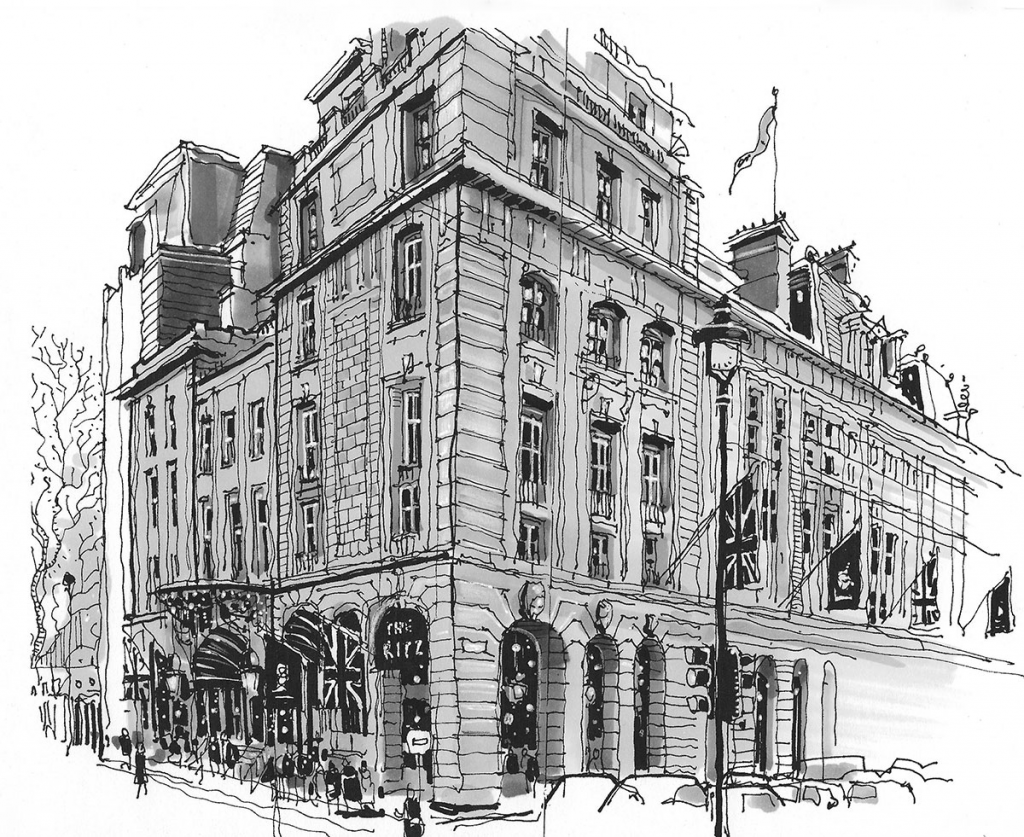Urban sketching is an enchanting form of art that captures the hustle and bustle of city life in beautifully detailed sketches. It’s a practice that invites artists to immerse themselves in the urban environment, observing the play of light and shadow, appreciating architectural details, and documenting everyday scenes. In this blog, we’ll delve into the world of urban sketching, its charm, and how you can get started on your own urban sketching journey.
Urban sketching is a captivating artistic practice that involves the on-site, spontaneous depiction of cityscapes, streets, and architectural elements through the medium of drawing or painting. This form of artistic expression focuses on capturing the essence of urban life and the unique character of a location in a direct, immediate manner.
Urban sketching often emphasizes observational skills, as artists venture into bustling city environments armed with sketchbooks and portable art materials. The sketches created in urban sketching convey a sense of place, documenting the vibrant energy, diverse architecture, and everyday scenes of city life. Artists may capture the beauty of historic landmarks, the rhythm of traffic, the charm of street markets, or the dynamic interplay of light and shadow on buildings and streets.

The Essence of Urban Sketching
Urban sketching is a celebration of the urban landscape and the life that unfolds within it. It’s about capturing a moment in time, preserving it with ink and color, and sharing your unique perspective of the world. Unlike studio-based art forms, urban sketching takes you out into the world, allowing you to interact with your surroundings in a direct and immediate way.
Tools of the Trade
Before you hit the streets with your sketchbook, you’ll need to assemble your urban sketching toolkit. Here are some essentials:
1. Sketchbook: Opt for a portable, sturdy sketchbook with pages that can handle ink, watercolor, or whatever medium you prefer.
2. Pens: Waterproof, archival-quality pens in various line weights are essential. They allow you to capture fine details and bold strokes alike.
3. Watercolors or Colored Pencils: Choose a compact set of watercolors or a reliable set of colored pencils for adding color to your sketches.
4. Brushes: A few quality brushes, including a fine-tipped brush for details and a medium-sized round brush for washes, will serve you well.
5. Water Container and Rag or Paper Towel: These are necessary for cleaning brushes and controlling the water flow when using watercolors.
6. Folding Stool or Portable Seating: A lightweight stool can provide comfort during long sketching sessions.
7. Travel-Friendly Easel (Optional): If you’re working with larger sketchbooks or using an easel for stability, consider a portable, adjustable option.
Choosing Your Urban Subjects
Urban sketching offers an abundance of subjects, from historic architecture to bustling markets and serene parks. Here are some ideas to get you started:
Street Scenes: Capture the energy of busy streets, complete with pedestrians, vehicles, and storefronts.
Architectural Details: Zoom in on intricate facades, ornate windows, and unique architectural elements.
Parks and Green Spaces: Find tranquility amidst the urban chaos by sketching parks, gardens, or even a quiet corner with a bench.
Cafés and Markets: Document the vibrant atmosphere of local markets or the cozy intimacy of a café scene.
Public Transport: Trains, buses, and subway stations can provide dynamic settings for your sketches.
Join the Urban Sketching Community
Urban sketching isn’t just about the art; it’s also about the community. Joining local or online urban sketching groups can offer camaraderie, inspiration, and opportunities to sketch with like-minded artists.
Practice, Patience, and Perseverance
Urban sketching is a journey, not a destination. It’s about embracing imperfections, learning from every sketch, and enjoying the process. So, grab your sketchbook, head out into the urban jungle, and let the city inspire your creativity!

